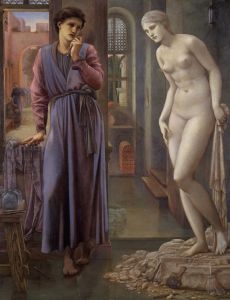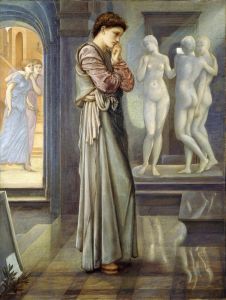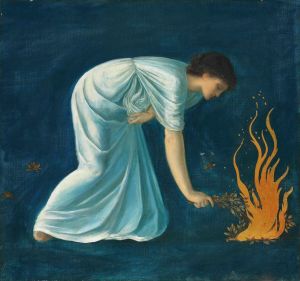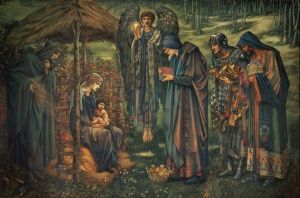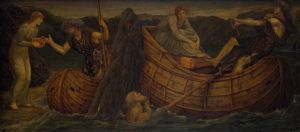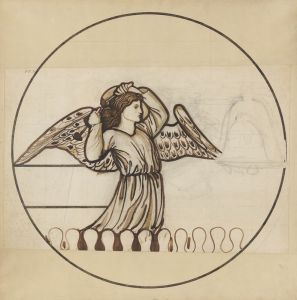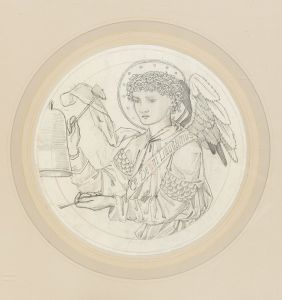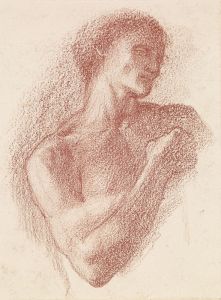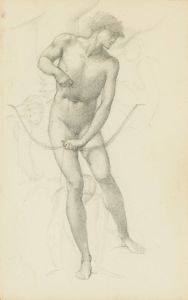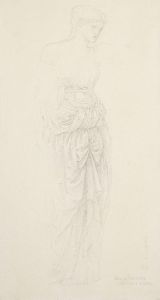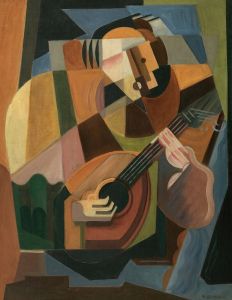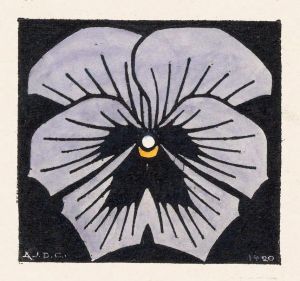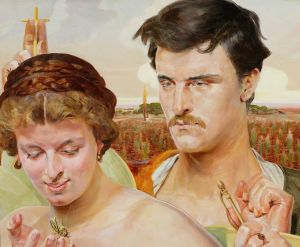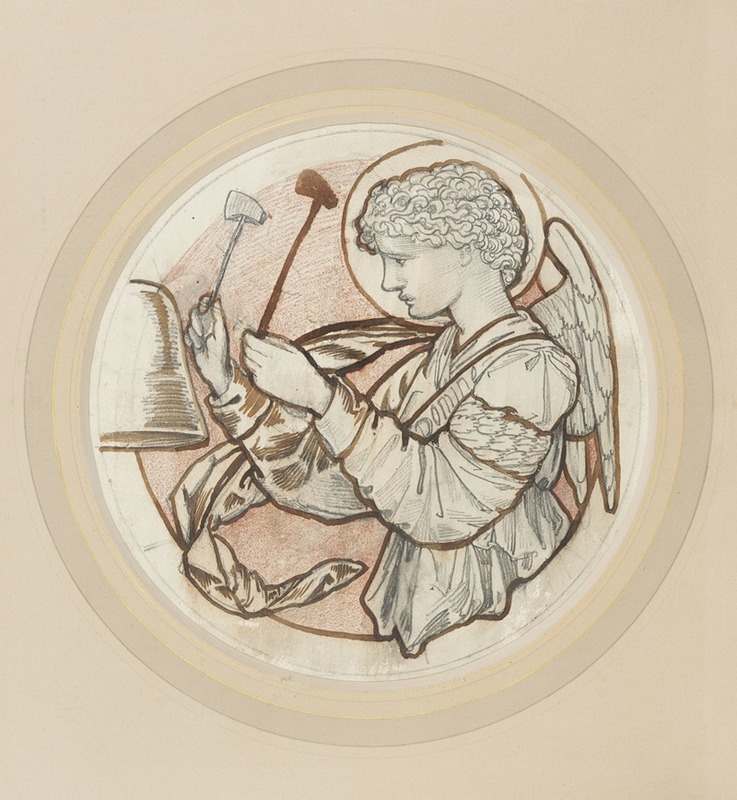
Angel Playing on Bells II
A hand-painted replica of Sir Edward Coley Burne-Jones’s masterpiece Angel Playing on Bells II, meticulously crafted by professional artists to capture the true essence of the original. Each piece is created with museum-quality canvas and rare mineral pigments, carefully painted by experienced artists with delicate brushstrokes and rich, layered colors to perfectly recreate the texture of the original artwork. Unlike machine-printed reproductions, this hand-painted version brings the painting to life, infused with the artist’s emotions and skill in every stroke. Whether for personal collection or home decoration, it instantly elevates the artistic atmosphere of any space.
"Angel Playing on Bells II" is a painting by the British artist Sir Edward Coley Burne-Jones, a prominent figure in the Pre-Raphaelite Brotherhood, a movement that sought to return to the detail, intense colors, and complex compositions of Quattrocento Italian art. Burne-Jones, known for his romantic and mythical subjects, often drew inspiration from literature, mythology, and medieval themes, which is evident in his body of work.
The painting "Angel Playing on Bells II" is part of a series of works by Burne-Jones that depict angels engaged in musical activities. This particular piece features an angel playing a set of bells, a motif that Burne-Jones revisited in various forms throughout his career. The depiction of angels was a recurring theme in Burne-Jones's work, reflecting his interest in the spiritual and the ethereal, as well as his fascination with the harmonious blend of music and visual art.
Burne-Jones's style is characterized by elongated figures, intricate patterns, and a dreamlike quality, all of which are present in "Angel Playing on Bells II." The angel is typically portrayed with serene features and flowing garments, embodying a sense of tranquility and grace. The use of soft, muted colors and delicate brushwork contributes to the painting's ethereal atmosphere, inviting viewers into a world of beauty and contemplation.
The painting is a testament to Burne-Jones's skill in combining elements of the decorative arts with fine art, a hallmark of the Aesthetic Movement, of which he was a key figure. This movement emphasized the visual and sensual qualities of art and design over narrative content or moral messages. In "Angel Playing on Bells II," the focus is on the aesthetic experience, the beauty of the angelic figure, and the imagined sound of the bells, rather than any specific story or allegory.
Burne-Jones's work was highly influential in his time, and he was associated with other notable artists and designers, including William Morris, with whom he collaborated on various projects. His paintings often reflect the ideals of the Arts and Crafts Movement, which sought to revive traditional craftsmanship and integrate art into everyday life.
"Angel Playing on Bells II" is part of a broader context of Burne-Jones's exploration of musical themes, which can be seen in other works such as "The Golden Stairs" and "The Angel." These paintings collectively highlight his interest in the intersection of music and visual art, as well as his ability to convey a sense of otherworldliness and serenity.
The painting is housed in a collection that appreciates Burne-Jones's contribution to the art world, where it continues to be admired for its beauty and craftsmanship. It remains an example of Burne-Jones's dedication to creating art that transcends the ordinary and invites viewers into a realm of imagination and wonder.





